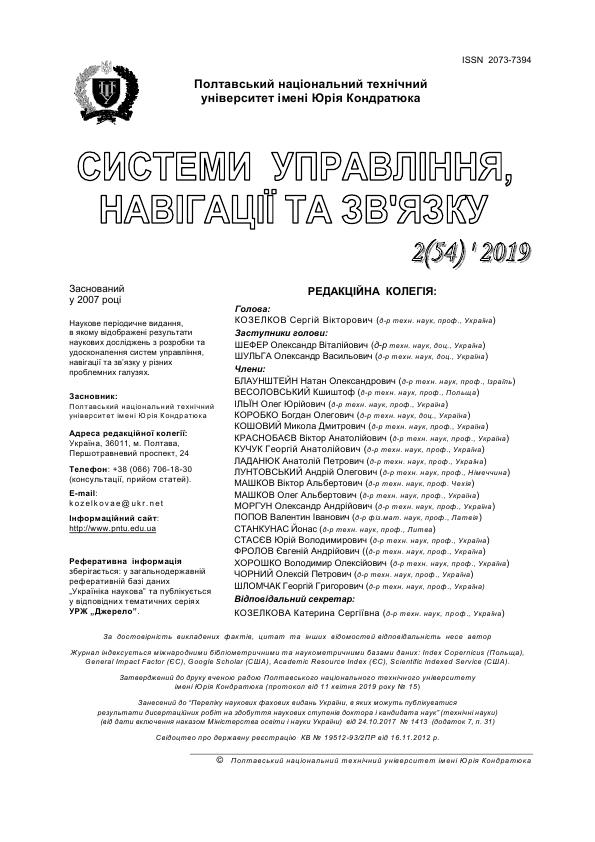MODERNIZATION THE SITE WAYS TECHNOLOGY BY USING THE ADAPTIVE SITES METHOD
DOI:
https://doi.org/10.26906/SUNZ.2019.2.099Keywords:
layout, adaptive grid, HTML, CSS, 960 Grid System, Grid Layout, Flexboxes, Berners-Lee, front-end, frameworks, adaptationAbstract
The subject of our research is the study of the method of fast site layout using an adaptive grid. The article presents materials describing the structure and advantages of using adaptive grids in the site layout, and also discusses the advantages of using grid technologies when adapting sites to mobile platforms. The work shows the need and efficiency of using new systems in the development of the site. As an innovative system, the authors proposed adaptive grids, the so-called “flexible boxes”. Which are supported by all browsers and cause professional interest from a large number of developers. Results - the authors describe all the advantages and disadvantages of using the grid method, give recommendations and arguments for the application of the principle of "flexible boxes" in practice. The general structure of the grid is considered by the example of a visual layout, the role of the grid in site design is emphasized, and the code for the corresponding implementation is presented. The authors emphasize the novelty, relevance, efficiency of the use of grid systems and the possibility of flex-boxing. One of the accents is that this system has a high degree of mobility and can be reused in new projects. Conclusion - the site proposed a method of layout based on adaptive grids, allowing the user to improve the layout technology of the site, simplify the development of individual elements of the site, provide a more logical and understandable HTML code, improve the site design, use the ability to adapt the site for different platforms. The authors of the work provide examples of the site code for implementation.Downloads
References
Сетки без заморочек. – Режим доступу до ресурсу: https://habr.com/ru/post/149816/.
История создания сайтов - с чего все начиналось. – Режим доступу до ресурсу: https://nischenko.ru/poleznopochitat/istoriya-sozdaniya-sajtov-s-chego-vse-nachinalos.html.
Ічанська Н.В., Моргун Р. Ю. Система керування контентом як основа для створення інтернет-ресурсів // Тези 12 міжн. НТК “ПРОБЛЕМИ ІНФОРМАТИЗАЦІЇ”, 12 – 13 грудня 2018 року, Київ, ДУТ, 2018. – С. 79-80.
Ічанська Н.В., Моргун Р.Ю. ОСОБЛИВОСТІ ВИКОРИСТАННЯ СУЧАСНИХ ВЕБ-ТЕХНОЛОГІЙ ПРИ РОЗРОБЦІ ТУРИСТИЧНОГО САЙТУ // Електронні та мехатронні системи: теорія, інновації, практика: збірник наукових праць за матеріалами IV Міжнародної науково-практичної конференції, 20-21 листопада, 2018 р. / Полтавський національний технічний університет імені Юрія Кондратюка. Полтава: ПолтНТУ, 2018. – с. 43-45.
Ichanska N., Gritsenko A., Shefer V. Development of software service for sale of vehicles // Системи управління, навігації та зв’язку.. – Полтава: ПНТУ, 2018. – Т. 4 (50). – С. 105-108. – doi: https://doi.org/10.26906/SUNZ.2018.4.105 .
Ichanska N.V., Podoshvelev Yu.G., Smitskiy O., Rybachenko K. A quality selection of software to build a service of electronic equipment sales. - Системи управління, навігації та зв’язку. – Полтава : ПолтНТУ, 2018.– № 3 (49). – С. 111-116.
Шефер О. В., Пугач М. В., Скрильник О. М. Алгоритм ідентифікації нелінійних технічних систем за виміряними даними // Вісник Кременчуцького державного політехнічного університету. – Кременчук: КДПУ, 2005. Вип. 3 (32). – С. 203-206.
CSS-фреймворк википедия. – Режим доступу до ресурсу: https://ru.wikipedia.org/wiki/CSS-фреймворк .
PSD макеты для вёрстки сайтов. – Режим доступу до ресурсу: https://tpverstak.ru/psd-mockups/.
10. 960 Grid System - это очень просто. – Режим доступу до ресурсу: https://www.internet-technologies.ru/articles/960- grid-system-eto-ochen-prosto.html .
Гибкие сетки в CSS. – Режим доступу до ресурсу: https://idg.net.ua/blog/uchebnik-css/razmetka-css/adaptivnyjdizajn/gibkie-setki .
Кедлек Т. Адаптивный дизайн. Делаем сайты для любых устройств. ‒ 2013 ‒ С. 39-42.




